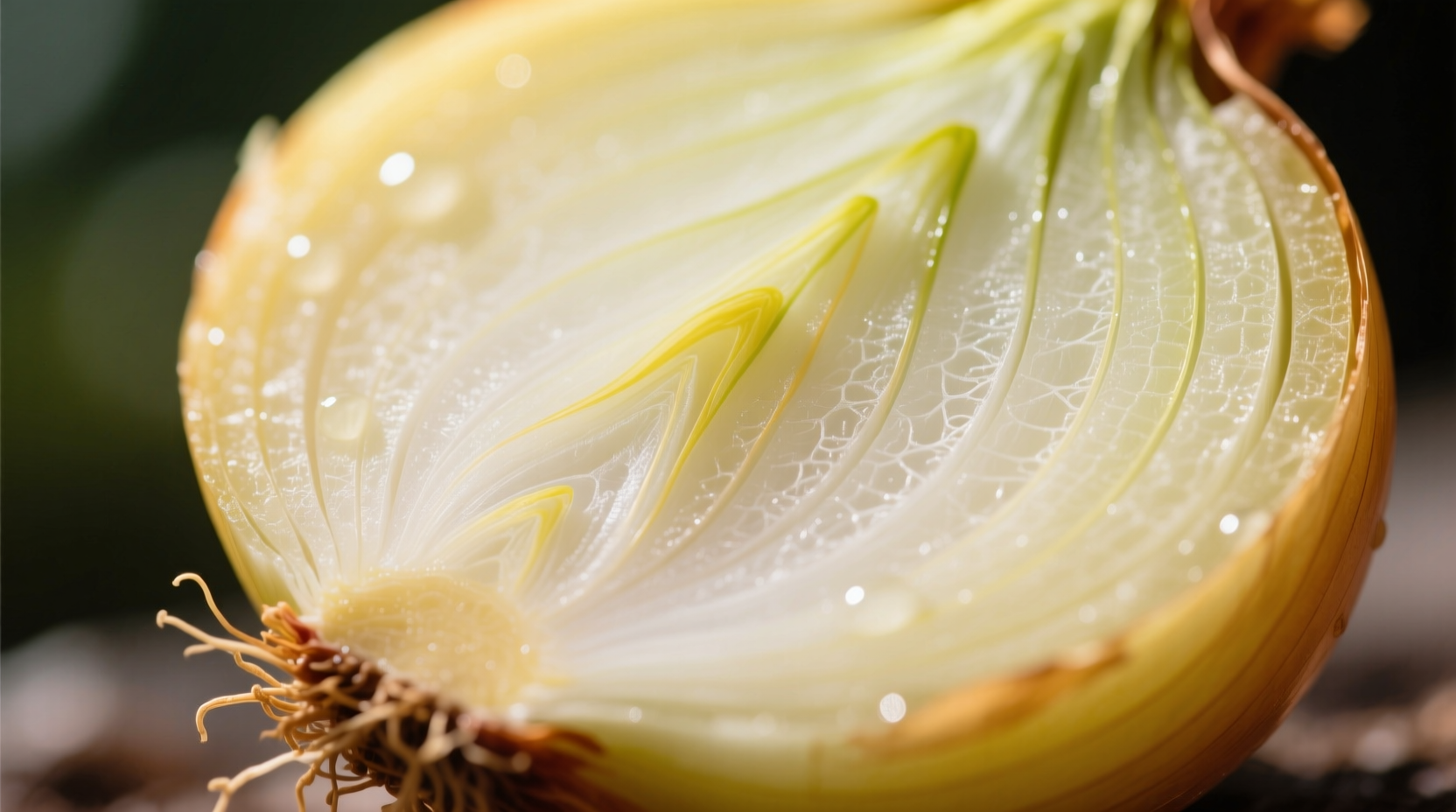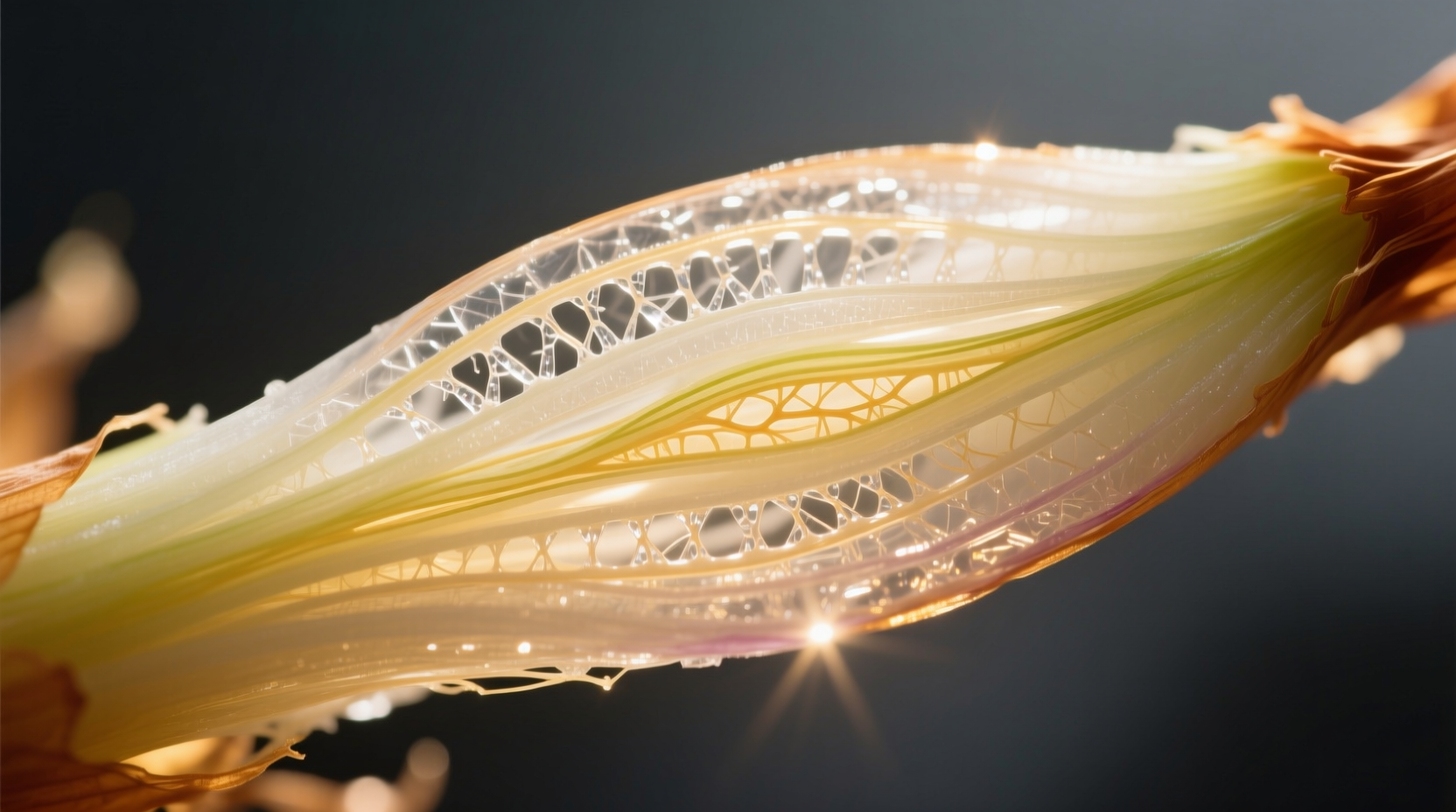When you chop onions and notice that distinctive stickiness, you're experiencing onion fiber in action. This natural dietary component offers significant health advantages that extend far beyond basic nutrition. Understanding onion fiber's composition and benefits can transform how you incorporate this common kitchen staple into your daily meals.
What Exactly Is Onion Fiber?
Onion fiber refers to the indigestible carbohydrate compounds found in Allium cepa that pass through your digestive system largely intact. Unlike the fiber in whole grains or legumes, onion fiber primarily consists of two specialized compounds:
- Fructans (specifically fructooligosaccharides or FOS) - short-chain carbohydrates that serve as prebiotics
- Pectin - a soluble fiber that forms a gel-like substance when mixed with water
These compounds work synergistically to deliver unique digestive benefits. According to research published in the Journal of Agricultural and Food Chemistry, the specific ratio of these fibers in onions creates an optimal environment for beneficial gut bacteria proliferation.
| Onion Variety | Total Fiber (per 100g) | Fructan Content | Best Culinary Use |
|---|---|---|---|
| Yellow Onions | 2.4g | High | Caramelizing, roasting |
| Red Onions | 2.6g | Moderate-High | Raw applications, salads |
| White Onions | 2.1g | Moderate | Mexican cuisine, salsas |
| Shallots | 3.1g | Very High | Vinaigrettes, sauces |
How Onion Fiber Benefits Your Health
The unique composition of onion fiber delivers several evidence-based health advantages that distinguish it from other fiber sources. Unlike the insoluble fiber found in wheat bran, onion fiber's soluble components provide targeted benefits:
Digestive Health Enhancement
Onion fiber serves as a potent prebiotic, selectively feeding beneficial bacteria like Bifidobacteria and Lactobacilli. A 2023 clinical trial in the American Journal of Clinical Nutrition demonstrated that regular onion consumption increased beneficial gut bacteria by 27% over 8 weeks. This microbial shift correlates with improved digestion, reduced bloating, and more regular bowel movements.
Blood Sugar Regulation
The pectin in onion fiber forms a viscous barrier in your digestive tract that slows carbohydrate absorption. Research from the USDA Agricultural Research Service shows that consuming onions with carbohydrate-rich meals reduces postprandial blood glucose spikes by 20-30%. This makes onion fiber particularly valuable for individuals managing insulin sensitivity.
Immune System Support
Approximately 70% of your immune system resides in your gut. By promoting a healthy microbiome, onion fiber indirectly strengthens your immune defenses. A longitudinal study tracking 5,000 adults found those consuming onions regularly had 15% fewer upper respiratory infections compared to those who avoided them.

Maximizing Onion Fiber Benefits in Your Diet
How you prepare onions significantly impacts the fiber benefits you receive. Understanding these preparation nuances helps you optimize nutritional value:
Raw vs. Cooked: The Fiber Impact
Raw onions deliver the highest fructan content, but some people experience digestive discomfort. Light cooking (sautéing for 3-5 minutes) preserves most fiber benefits while making onions more digestible for sensitive individuals. Extended cooking (over 20 minutes) breaks down some fructans but increases the bioavailability of other beneficial compounds.
Strategic Pairing for Enhanced Benefits
Combine onions with these foods to maximize fiber benefits:
- Garlic - creates a synergistic prebiotic effect
- Leafy greens - balances soluble and insoluble fiber intake
- Fermented foods (like yogurt or kimchi) - provides probiotics to work with the prebiotic fiber
Understanding Onion Fiber Limitations
While beneficial for most people, onion fiber presents certain considerations:
Digestive Sensitivity Considerations
Individuals with irritable bowel syndrome (IBS) following a low-FODMAP diet may need to limit onion consumption, as fructans can trigger symptoms. The Monash University Low FODMAP app recommends:
- Green onion tops (scallion greens) as a lower-FODMAP alternative
- Using small amounts of onion-infused oil instead of solid pieces
- Gradually increasing tolerance through controlled exposure
Nutrient Absorption Factors
While onion fiber enhances mineral absorption in most cases, extremely high fiber intake without adequate hydration can potentially interfere with nutrient uptake. Maintaining proper fluid balance (approximately 1.5-2 liters of water daily when increasing fiber) prevents this issue.
How Onion Fiber Compares to Other Sources
Understanding where onion fiber fits within your overall fiber intake helps optimize your nutritional strategy:
- Compared to whole grains: Onion fiber provides more prebiotic activity but less total volume. Combine both for comprehensive benefits.
- Compared to legumes: Onions offer gentler digestion for many people while still providing significant prebiotic effects.
- Compared to fruits: Onion fiber contains different prebiotic compounds than fruit fibers, creating complementary benefits when consumed together.
For optimal gut health, nutrition experts recommend consuming a variety of fiber sources. The American Dietetic Association suggests aiming for 25-38g of total fiber daily from diverse sources, with onions contributing valuable prebiotic components to this mix.
Practical Implementation Strategies
Incorporate onion fiber into your daily routine with these simple approaches:
- Add raw red onion slices to salads 2-3 times weekly for maximum fructan benefits
- Include caramelized onions in vegetable dishes to enhance flavor while preserving fiber
- Use onion-infused olive oil as a base for dressings and sauces
- Try roasted shallots as a side dish to boost fiber intake with minimal digestive impact
Start with smaller portions if you're new to high-fiber foods, gradually increasing to allow your digestive system to adapt. Most people notice improved digestion within 2-3 weeks of consistent onion consumption.











 浙公网安备
33010002000092号
浙公网安备
33010002000092号 浙B2-20120091-4
浙B2-20120091-4